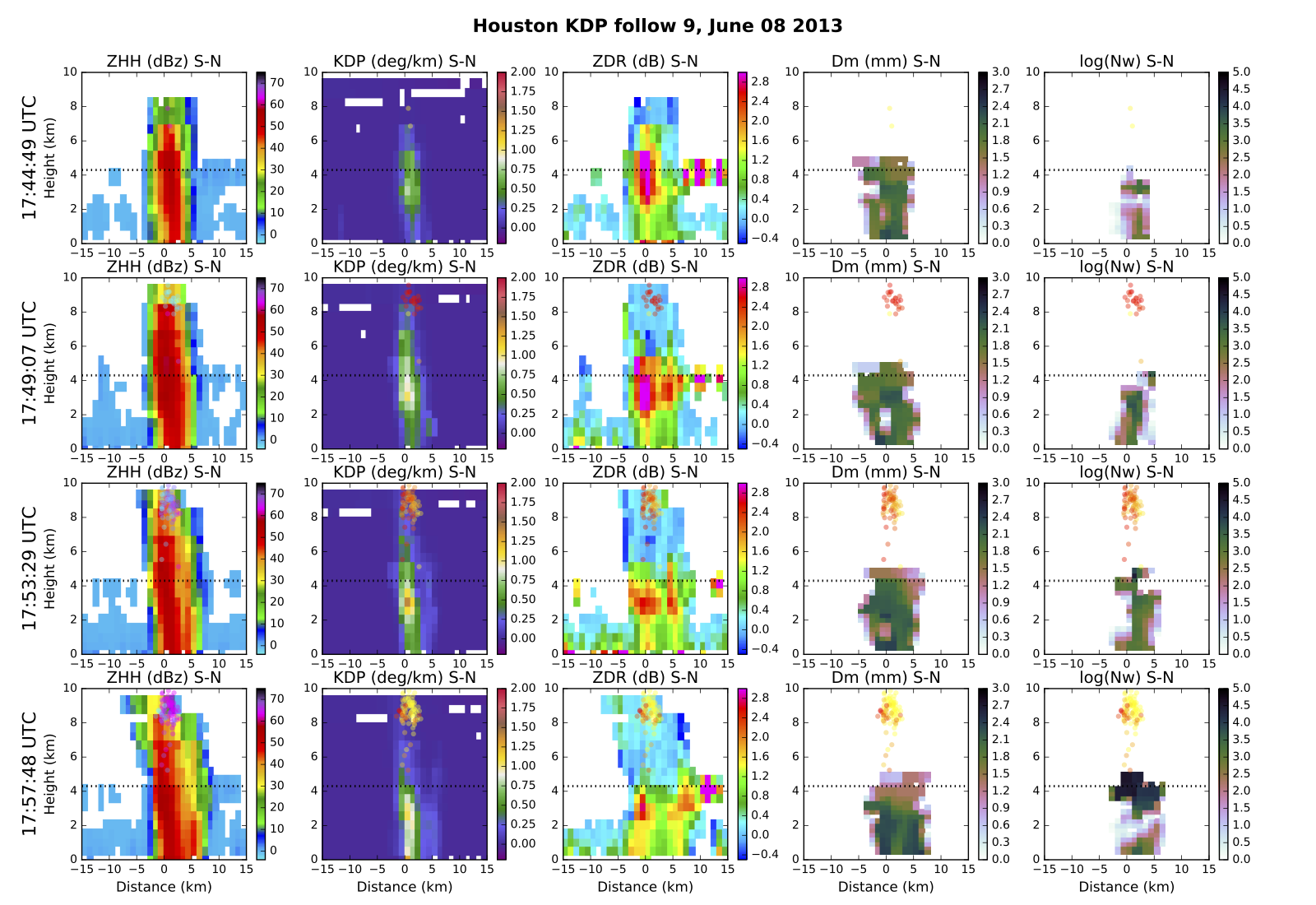Use of polarimetric radar measurements to constrain simulated convective cell evolution
Submitter:
van Lier-Walqui, Marcus — Columbia University
Collis, Scott Matthew — Argonne National Laboratory
Area of research:
Cloud-Aerosol-Precipitation Interactions
Journal Reference:
Science
We present proof-of-concept comparison of tracked isolated thunderstorm cells that are observed and simulated around Houston, Texas. We demonstrate comparison of observed and simulated polarimetric radar observables and retrievals, as well as observed lightning activity. We also present multi-year statistics on isolated cell tracks, as well as the numbers observable within fixed distances from the NEXRAD site. This study lays the groundwork for the TRACER field deployment proposal.
Impact
In a world in which weather and climate are affected by human actions, it is important to break the bottleneck in improvement of convective microphysics in models in order to characterize how pollution and climate change may affect the evolution, severity, and spatial distribution of thunderstorms. An area like Houston, which commonly experiences relatively clean onshore winds, but also has a spatially localized pollution source, provides a potentially strong test for pollution effects on thunderstorms. Applying new open-source tools for analyzing radar data and tracking storms, we demonstrate how these resources might be used to improve models and physical understanding of coupled microphysics and dynamics, starting with isolated cells.
Summary
We demonstrate Lagrangian analysis of isolated deep convective updrafts via tracking of specific differential-phase columns and reflectivity structures, signals associated with strong vertical updrafts in storms, in both a simulation and observations. By tracking storms in time, we gain insight into the evolution of a single updraft cell from birth to death, and how polarimetric radar observables (reflectivity, differential reflectivity, specific differential phase) and retrievals (rain drop size distribution parameters), and lightning flash activity, correlate over the life cycle of a single convective cell. We also present a longer-term analysis of the statistical distribution of isolated convective cells around the Houston area (location, duration, frequency, diurnal timing, propagation direction, path length). We demonstrate the suitability of this region for a more in-depth and statistically robust study of coupled convective dynamics and microphysics, including the effect of aerosol perturbations, informing the timing of intensive observations.



